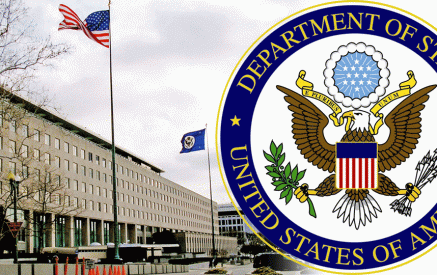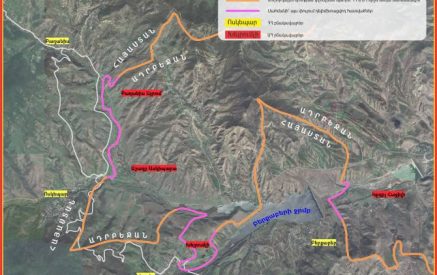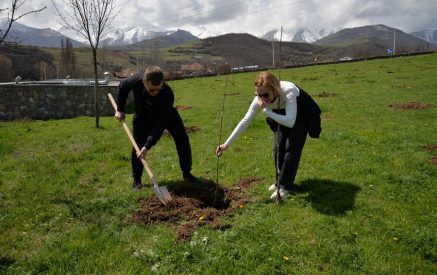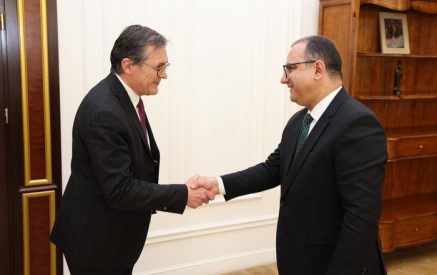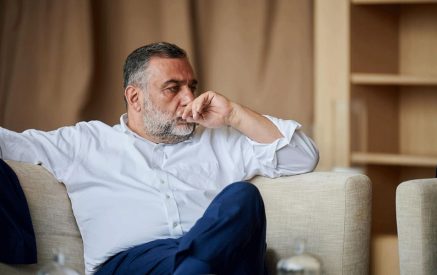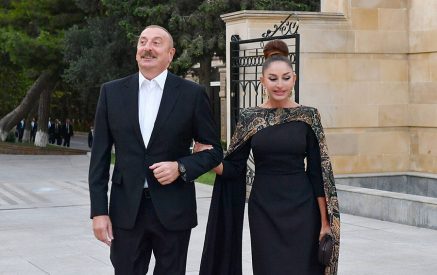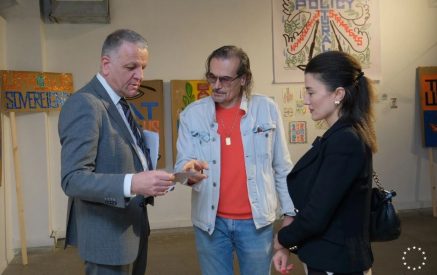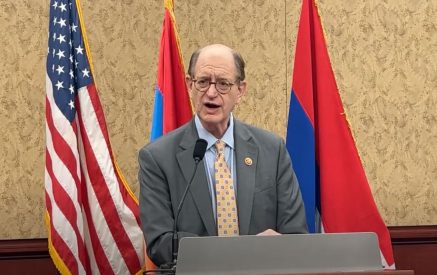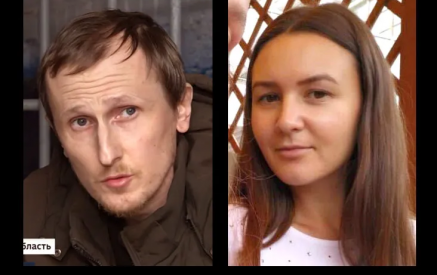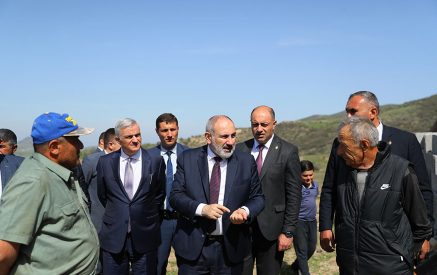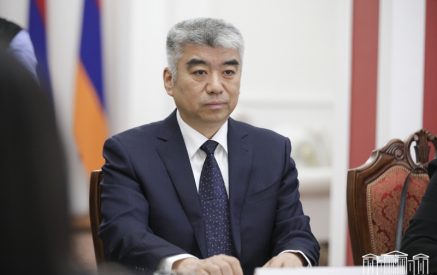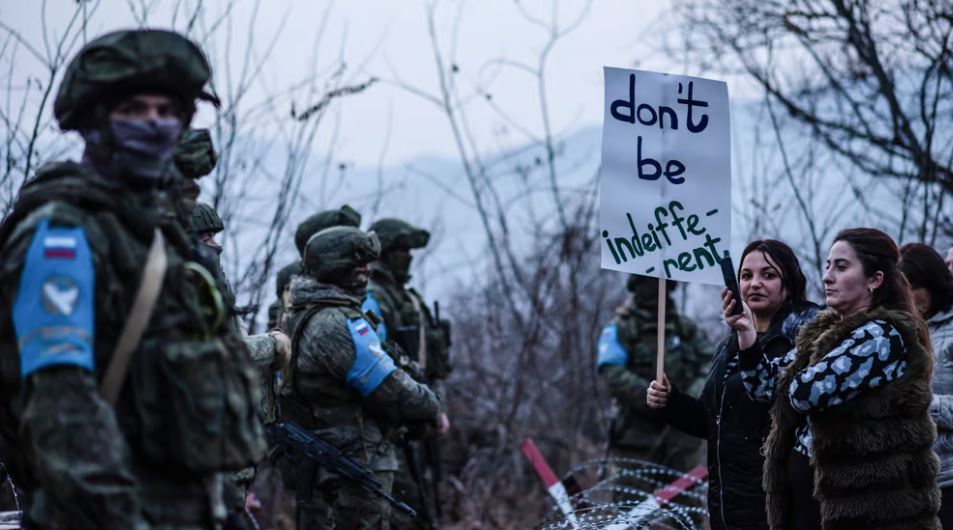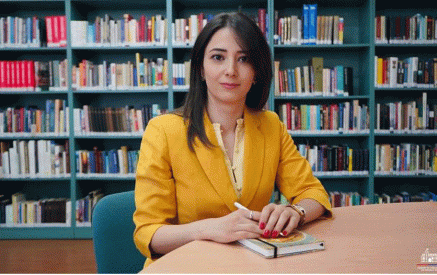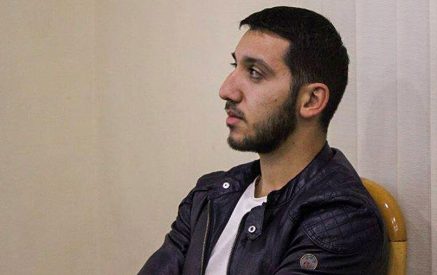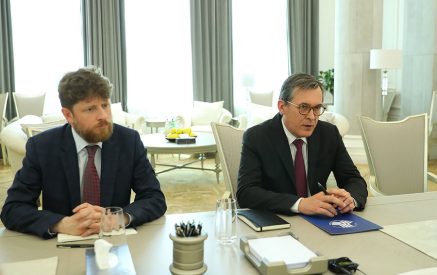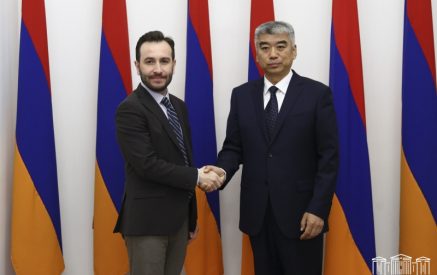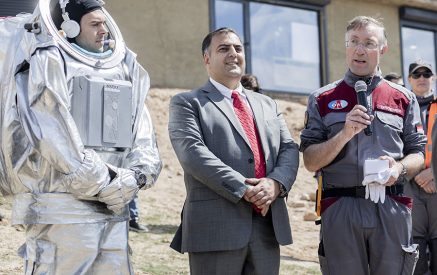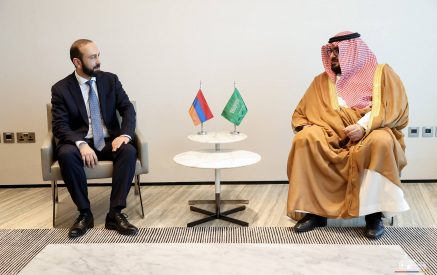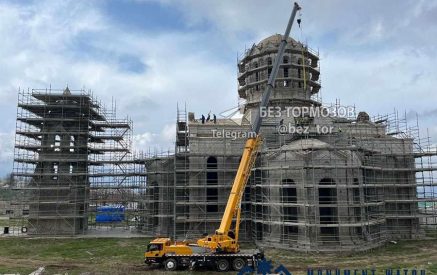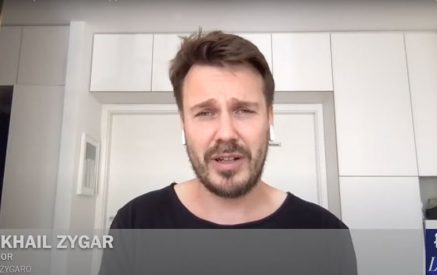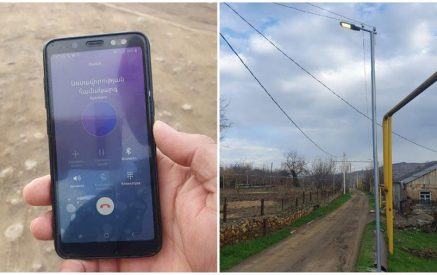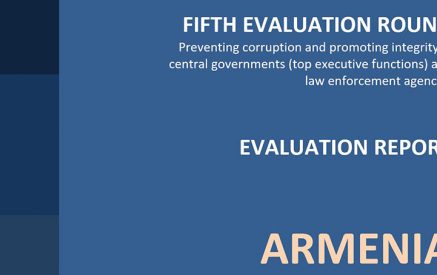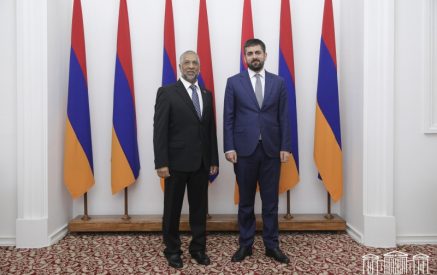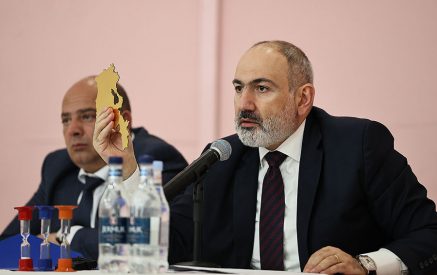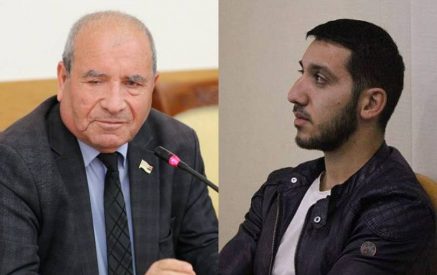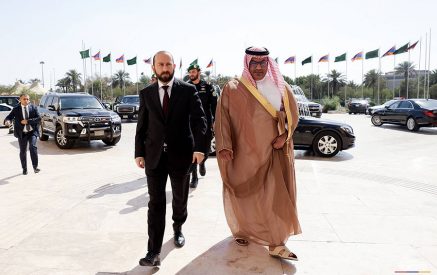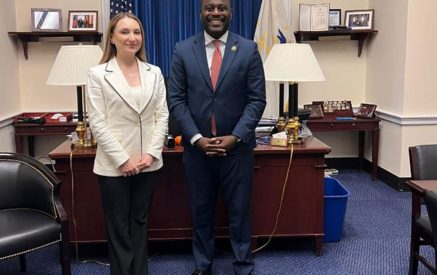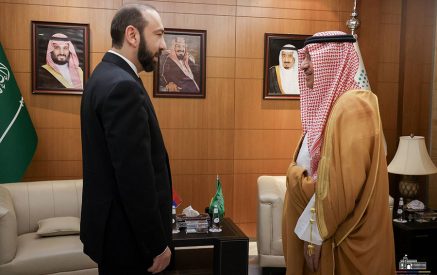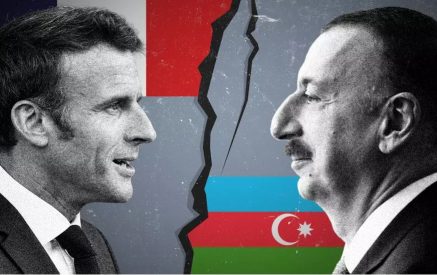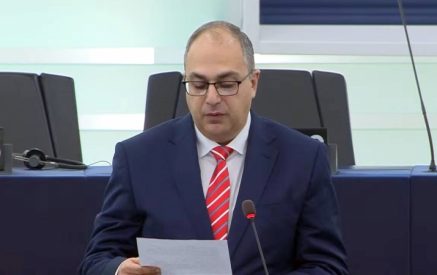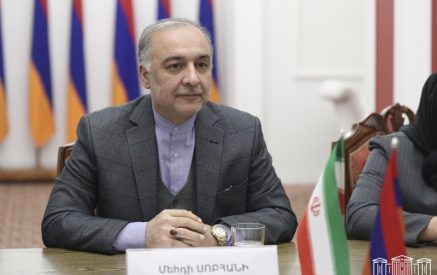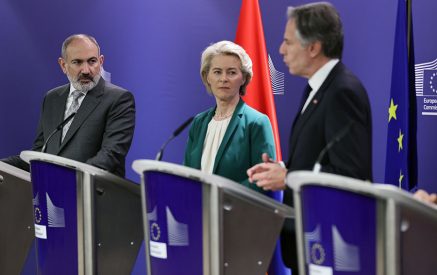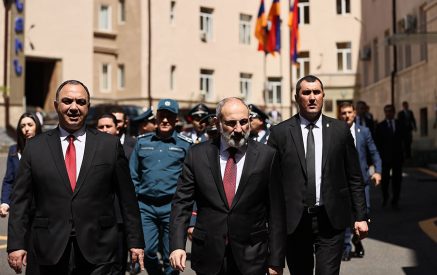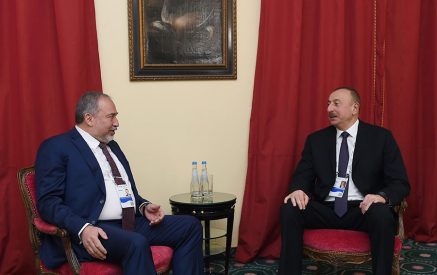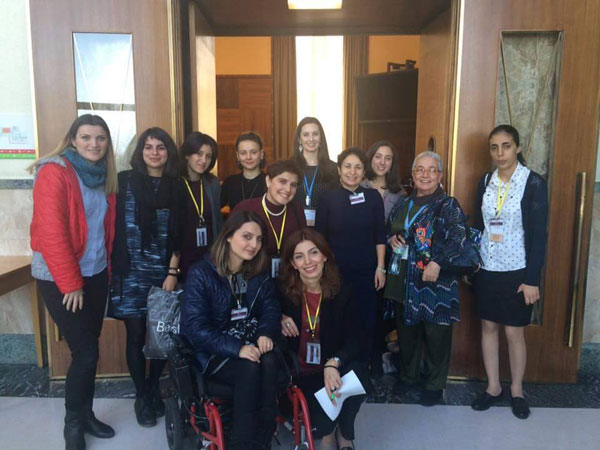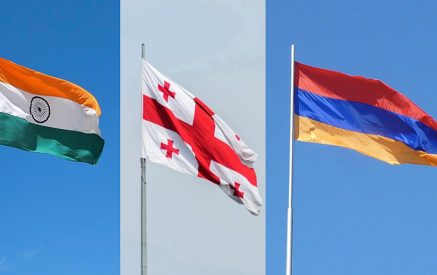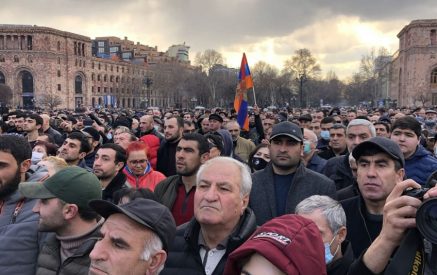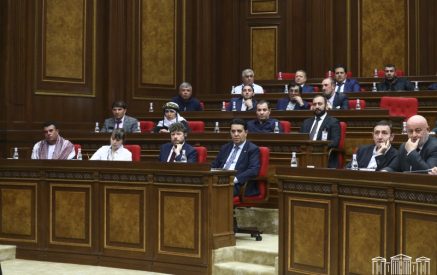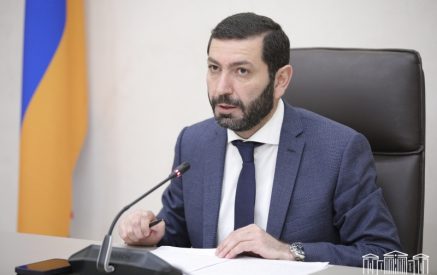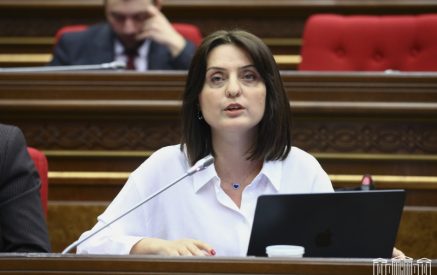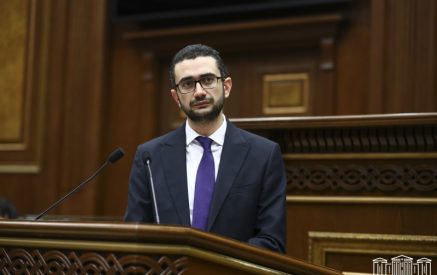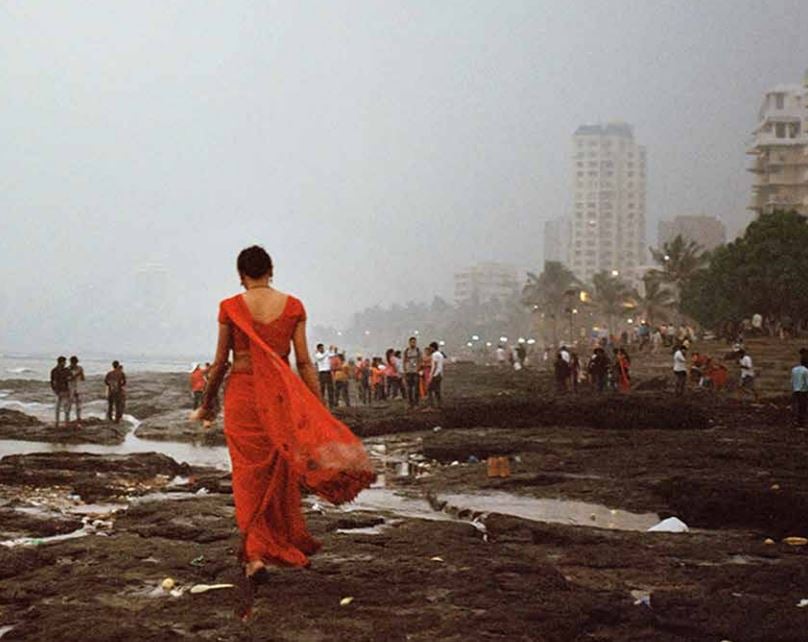By Ani Jilozian
armenianweekly.com. The Armenian government ratified the United Nations (UN) Convention on the Elimination of Discrimination against Women (CEDAW) in 1993 and is periodically reviewed by the CEDAW Committee to make sure their policies and programs are in line with the convention, which sets legally binding obligations for States parties and international standards for gender equality.
In March 2014 Armenian State parties submitted a country report to the Committee. In response, civil society representatives worked diligently on shadow and alternative reports over the course of the whole year to fact check and bring to light human rights abuses based on their observations, which required months of research, writing, editing, and compiling data from various NGOs working on gender issues in Armenia. We all spent tireless hours on the reports, feeling a sense of responsibility to accurately represent the situation on the ground and push for reform to create positive change for the country.
Following the submission of the reports, the CEDAW Committee is tasked with consulting representatives from government, international organizations, and civil society at the UN House in Geneva over several rounds. Armenia’s turn came during the first week of November. Our civil society delegation, in preparation to lobby the Committee, spent sleepless nights preparing what we would say. It was certainly difficult to develop statements that voiced our concerns as one unified delegation, as we represented a large network of organizations with varied interests, but we were able to work through those challenges to solidify our message and eloquently deliver it to the Committee.
Read also
Over a one-week period, we presented our oral statement to the Committee and invited them to a lunch briefing, where we spoke more in-depth about all the issues presented in our reports as well as important new developments in the country. It served our cause well that our civil society delegation not only brought in specialized experience in our various fields of interest but also represented the diverse community of women living in Armenia.
On the last day, the Committee held a State briefing, where—armed with facts and figures from all the materials given to them— they raised difficult issues with the Armenian government delegation, which consisted of representatives from the Ministry of Justice, Ministry of Foreign Affairs, Ministry of Education and Science, Social Affairs Department of the Government Staff, Ministry of Health, Ministry of Labor and Social Affairs, and the Permanent Mission of Armenia to the United Nations Office.
Once the briefing began, it became immediately apparent that the Committee had taken nearly all of our voiced concerns into account, as they questioned the government about persisting gender inequality and the widespread abuse of women’s rights in Armenia. It was indeed validating for us to hear our words being echoed through the Committee members at such an important platform. Below I summarize the issues that the Committee raised at the State briefing.
Regarding the controversial Law on Equal Rights and Equal Opportunity, the Committee asked how the law had been useful in combating gender inequality given the State’s purposeful removal of the word “gender” in all legal documents and the State-supported anti-gender propaganda following its adoption. Unsurprisingly, the response from Deputy Minister of Justice Vigen Kocharyan that “people have the right to use different terms,” showcased the State’s lack of political will to curb the perpetuation of such harmful stereotypes. The Committee also pointed out that the law lacks implementation mechanisms and punitive measures, to which the Government responded with no intention for the law to be reviewed or amended.
The Committee expressed concern over discriminatory gender bias and stereotypes perpetuated in educational materials at schools and universities as well as in the media. They highlighted the importance of gender education to be transformational for the country, with respective governmental entities working to make sure that students are educated on the accurate concept of gender and gender equality. The Committee recommended that the State adopt temporary special measures to engage more women in taking up senior levels in academia, to which the State had no answer. It seemed they lacked an understanding of the meaning of such measures as defined by the CEDAW Convention. Moreover, the Committee recommended the State to utilize resources and mobilize efforts to develop evaluation and monitoring mechanisms for upcoming gender education policies and ensure ongoing refresher trainings for educators.
With regards to the current stand-alone draft law on anti-discrimination, the Committee wanted to know whether sexual orientation and gender identity would be recognized as a protected ground by the law and how the State planned to combat homophobia and hate crimes targeting LBTI women, to which Kocharyan responded that Armenian law enforcement bodies take appropriate action—a statement far from the truth. The Committee also asked about the State’s intention to develop a comprehensive national action plan for the implementation of the United Nations Security Council’s resolution 1325 to ensure the safety of women in conflict-affected regions as well as their involvement in peace negotiations, to which the State could also not adequately respond.
In response to questions regarding the woeful underrepresentation of women in politics, State representatives attempted to justify the issue by saying that awareness raising campaigns are continually carried out to raise women’s political participation and that the gender quota in parliament has been increased. Whereas the new electoral code sets to raise women’s political participation, concerns remain regarding its timetable and as to how it will be properly implemented given past experience. Furthermore, the State could not provide a meaningful answer to the issue of the persistent underrepresentation of marginalized groups of women, including women with disabilities, rural women, and ethnic minorities, in political and economic life.
The committee brought up a number of issues concerning the employment of women, namely their involvement in the labor marker, the gender pay gap, and sexual harassment in the workplace, and urged the government to adopt temporary special measures to combat these issues. The Committee also voiced concerns about the administrative fine demanded of sex workers and the lack of employment options and other factors that force women into prostitution.
With regards to marginalized women, the Committee raised concerns about the lack of national legislation, policies, and programs to include women with disabilities, ethnic and sexual minorities, and rural women. Although the Head of the Social Affairs Department Astghik Mirzakhanyan noted that they had worked with NGOs during the drafting of the upcoming five-year National Action Plan on the Inclusion of Persons with Disabilities, in reality none of the recommendations proposed by NGOs in the field were included. A particularly telling moment came in response to the question posed on the lack of access of ethnic minorities to education and rampant early marriages. The State responded that they are not aware of any such cases, when in reality an estimated one quarter of Yezidi girls drop out of school due to early marriages and community pressure.
Regarding domestic violence, the Committee raised concerns about the fact that the Convention on preventing and combating violence against women and domestic violence (also known as the Istanbul Convention) is set to be signed after the adoption of a domestic violence law, thus leaving open the possibility that the law will not be in line with the convention. They spoke about the necessity for the draft law—set to be adopted by 2018—to be victim-centered and include civil and criminal remedies as well as provisions for marital rape. They also raised the critical issue of victim blaming and gender insensitivity that resonates throughout the entire criminal justice system. Voicing the concerns of civil society, the Committee urged the government to take measures to support NGO-run shelters and work to prevent and combat femicide. Though Kocharyan assured the committee that civil society was involved in the drafting process in a meaningful way, the government is currently in the process of pushing domestic violence legislation through using the same tired tactics.
A telling example of the State’s inability to use a women’s rights-centered approach to policy-making came from the Head of Maternity and Reproductive Health Protection Unit Gayane Avagyan, who assured the Committee that they were focused on reducing the high rate of abortion, despite the fact that the Committee’s concerns were regarding women’s access and availability to modern contraceptives, which had not seen any improvement in the last five years as per the Armenian Demographic and Health Surveys. Moreover, the Committee questioned the new provision to the abortion law that attempts to ban sex-selective abortions through mandatory counseling and a three-day waiting period. Failing to recognize the root causes of sex-selective abortion —namely deeply-entrenched patriarchal norms that lead society to value boys over girls, which is exacerbated by poor economic conditions—the new provision in effect limits women’s reproductive freedoms.
On Nov. 18, the Committee will release its concluding observations, an assessment of the implementation of the CEDAW treaty by the State, and will alert the Armenian government about the set of tasks they will need to implement in the coming two years. Civil society will closely monitor the outcome in an effort to keep the State accountable to its obligation and protect the rights of women in Armenia.

